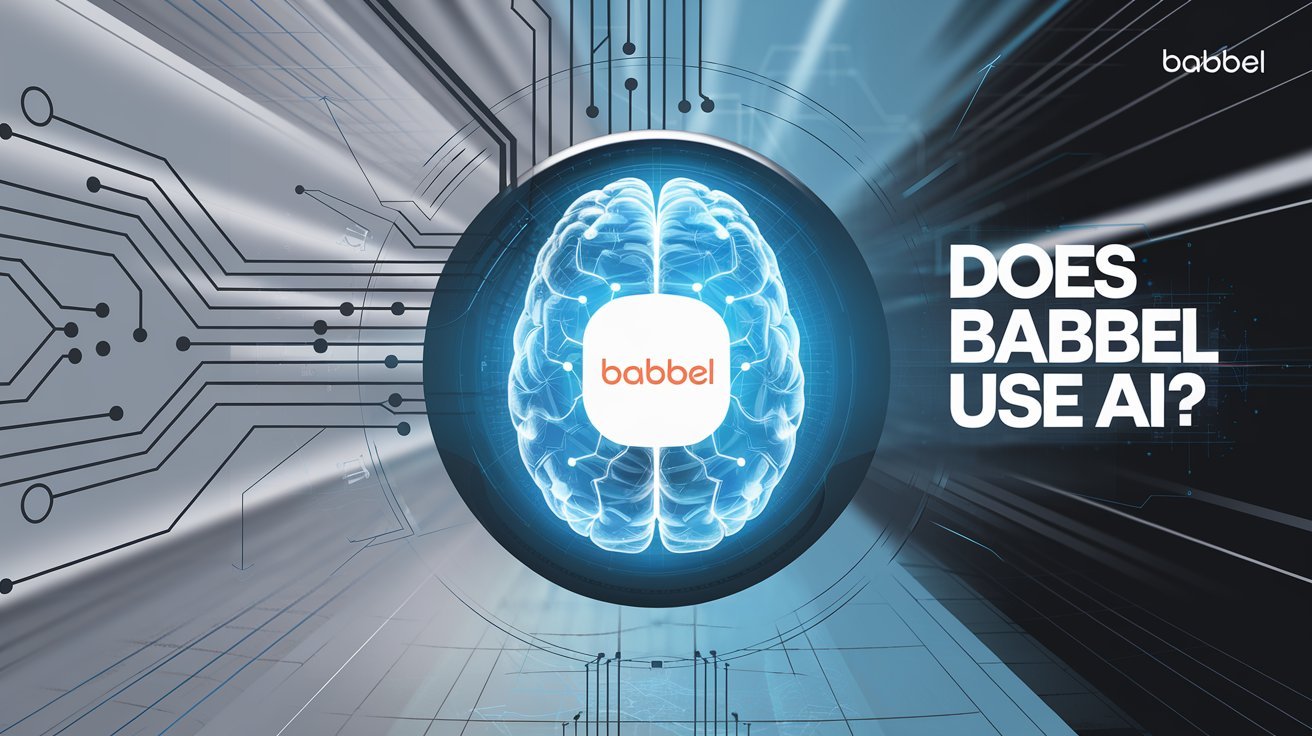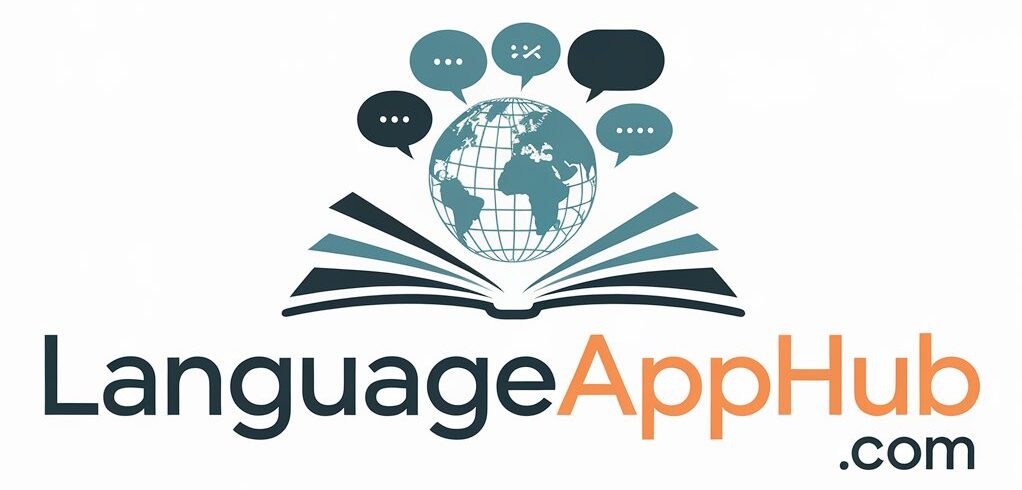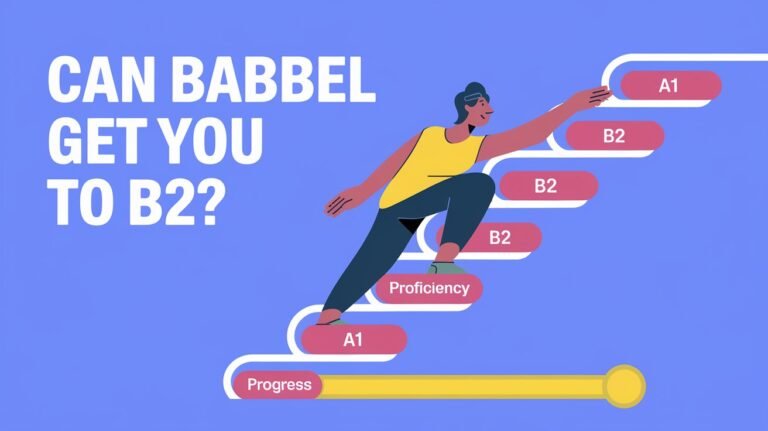Does Babbel Use Ai? Facts and Features Explained

Many people are using apps like Babbel to learn new languages. What makes Babbel special? It’s the AI technology, like AI-Enhanced Speech Recognition and Everyday Conversations. These features help users feel more confident and skilled in speaking.
These tools use millions of data points from Babbel’s audio library. They compare thousands of phoneme samples. This makes us wonder: Can AI really help in learning languages? And how does Babbel’s AI approach change the learning experience?
Babbel is a top name in language learning, with over 15 million subscriptions. It offers more than 60,000 lessons in 15 languages. The company’s AI technology is key to its success, offering personalized learning experiences.
By using AI, Babbel aims to make learning less stressful and more effective. Its speech recognition feature is available in five languages, including English and Spanish. This puts Babbel at the forefront of AI in language learning. But what does the future hold for language learning with AI?
Babbel Platform Architecture
Babbel’s platform uses a complex backend to talk to users. It offers a smooth and personalized learning journey. It uses speech recognition to check pronunciation and give feedback right away.
The Dynamic Experience Builder (DXB) is at the heart of the system. It connects to all data, making it easy to target and measure user experiences. This lets the platform adjust to each user’s needs, creating a learning path just for them.
Core Technology Components
The platform has many tools, like the Post Activity Feedback system and a self-efficacy questionnaire. These work together to give a full learning experience. They use speech recognition and personalized learning to keep users engaged and moving forward.
Backend Systems Integration
The backend systems are key to the platform’s smooth operation. They let data flow easily between different parts. This setup makes it fast to update the platform based on user feedback and changing learning needs.
User Interface Design Elements
The design of the user interface makes sure the experience is consistent and easy to use. The Dynamic Experience Builder (DXB) ensures all pop-up screens fit together well. This design has led to better user interaction, showing how well the platform supports personalized learning and speech recognition.
Does Babbel Use AI in Its Core Functions?
Babbel is a top language learning platform. It was named one of the world’s 150 most transformative companies in digital learning by GSV in 2024. This shows Babbel’s use of AI in language learning is innovative.
With over 60,000 lessons in 15 languages, Babbel offers a deep learning experience. Nearly 200 didactics experts developed these lessons. This makes Babbel a go-to for language learning.
Babbel’s AI technology makes learning personal. It lets users learn at their own speed. The AI adjusts dialogues to improve conversation skills.
Users get a learning experience that fits their style. Conversations start simple and get more complex. This helps users become fluent.
Some key features of Babbel’s AI-powered learning include:
- AI Conversation Partner for real-time speaking practice in multiple languages
- Personalized experience tailored to the user’s learning style
- Guided Conversations that progress from scripted dialogues to fluent speaking abilities
- Dynamic scenarios to enhance conversation readiness
Babbel uses AI to make learning languages fun and effective. It keeps improving its offerings. This makes Babbel a top choice in language learning.
Speech Recognition Capabilities
Babbel’s speech recognition is a key feature. It lets users practice their conversation skills. They get feedback on their pronunciation too.
The tool uses millions of data points from Babbel’s audio bank. It compares user recordings to thousands of phonemes samples.
Users get real-time feedback to adjust their pronunciation. This helps them improve their conversation practice. The accent analysis features also help identify areas for improvement.
Pronunciation Assessment Tools
Babbel’s pronunciation tools are advanced. They can adjust for different learner levels. This means feedback is tailored to each user’s needs.
Real-time Feedback Mechanisms
Babbel’s real-time feedback gives users immediate feedback. They can adjust their pronunciation on the spot. This is great for practicing speaking skills.
Accent Analysis Features
The accent analysis features help users pinpoint areas for improvement. They provide personalized feedback to help users reach their goals. This is useful for those aiming to sound like a native speaker.
Babbel’s speech recognition is a powerful tool for improving conversation and pronunciation. It offers real-time feedback, pronunciation assessment, and accent analysis. These features help users become more confident in their language skills.
| Feature | Description |
|---|---|
| Speech Recognition | Trained on millions of data points from Babbel’s audio bank |
| Pronunciation Assessment | Provides real-time feedback on pronunciation |
| Accent Analysis | Helps users identify areas where they need to improve their pronunciation |
Personalized Learning Algorithms
AI-powered language learning platforms focus on personalized learning. This lets users learn at their own speed and in their own way. AI makes these platforms offer learning experiences that fit each person’s needs and learning style.
Personalized learning helps users keep what they learn better and master subjects more. AI platforms look at how well users do and change the difficulty of what they learn. This gives users feedback right away and helps them practice using the language.
For example, AI-powered platforms can:
- Give study path recommendations that fit each user
- Change the difficulty of what they learn based on how well they do
- Use Intelligent Tutoring Systems (ITS) for a one-on-one learning experience
AI technology helps platforms like Babbel offer a unique and effective way to learn. Users can learn at their own pace and get feedback that’s just for them. This helps them improve their language skills and feel more confident.
AI-Powered Grammar Correction System
Babbel’s AI-powered grammar correction system is a standout feature. It uses AI to offer precise and tailored grammar correction. This helps learners enhance their language skills more effectively.
The system analyzes the learner’s input to spot grammar, syntax, and punctuation errors. It then offers contextual correction suggestions. These suggestions consider the language’s structure and the context of the error.
Error Pattern Recognition
The AI system can recognize error patterns. This allows it to give more accurate and personalized feedback. It’s very helpful for those who find certain grammar concepts hard.
Contextual Suggestions
The system gives correction suggestions based on the language’s structure and context. This helps learners grasp the right use of grammar and language structures. It also aids in developing a deeper understanding of the language.
Language Structure Analysis
The AI system also analyzes language structure. It provides detailed feedback on grammar, syntax, and punctuation. This helps learners gain a better grasp of the language’s underlying structure.
| Feature | Description |
|---|---|
| Error Pattern Recognition | Recognizes patterns of errors to provide more accurate feedback |
| Contextual Suggestions | Provides suggestions for correction based on language structure and context |
| Language Structure Analysis | Provides detailed feedback on grammar, syntax, and punctuation |
Vocabulary Recommendation Engine
Babbel’s vocabulary engine uses AI to offer personalized learning. It suggests words and phrases based on your interests and goals. This helps you build your vocabulary more effectively.
The engine’s benefits are clear. AI technology gives you real-time feedback, showing where you need to improve. It also makes sure you get content that fits your level and interests.
Some key features of Babbel’s engine include:
- Personalized vocabulary lists, based on your interests and goals
- Real-time feedback and assessment, using AI technology to identify areas for improvement
- Adaptive difficulty adjustment, to ensure you’re challenged but not overwhelmed
AI technology makes Babbel’s vocabulary engine more effective and fun. This is just one way AI is changing language learning. It’s an area that will likely keep growing.
Data Privacy and AI Implementation
AI technology is growing fast, and data privacy is a big worry in schools. Language learning sites like Babbel must keep user data safe. They do this by storing data securely and being open about how it’s used to help learning.
Babbel makes sure your info is safe, like how well you’re doing and how you say words. Their AI helps make learning fit just for you. They use safe servers and encryption to keep your data safe.
User Information Protection
Babbel takes many steps to keep your info safe, including:
- Secure data storage and transmission
- Access controls to prevent unauthorized access
- Regular security audits to identify and address potential vulnerabilities
Machine Learning Data Usage
Babbel’s AI uses machine learning to look at your data and give you feedback. This includes:
- Progress tracking to identify areas for improvement
- Audio inputs for pronunciation analysis
- Learning patterns to recommend tailored exercises
Babbel’s AI makes sure your data is safe while helping you learn a new language. This way, you can trust that your data is being used well. It makes learning more effective and builds trust with users.
Competitor AI Technology Comparison
Many platforms use AI to make learning languages better. We need to see how Babbel’s AI compares to others. This helps us understand what makes each platform unique.
Duolingo offers many languages and uses AI for personalized lessons. Rosetta Stone needs a premium subscription but offers professional help and offline use. Here’s what each platform offers:
- Duolingo: offers over 40 languages, uses a gamified approach, and provides a free version with optional paid features
- Rosetta Stone: offers over 20 languages, provides professional guidance, and requires a premium subscription
- Babbel: offers 14 languages, focuses on conversational learning, and provides a subscription-based model
Babbel’s AI technology is compared to others, showing each platform’s strengths and weaknesses. Duolingo is great at making learning fun. Rosetta Stone offers expert help. Babbel is known for its focus on talking and is more affordable.
| Platform | Number of Languages | AI Technology Features | Subscription Model |
|---|---|---|---|
| Duolingo | 40+ | Personalized lessons, gamified approach | Free with optional paid features |
| Rosetta Stone | 20+ | Professional guidance, offline accessibility | Premium subscription |
| Babbel | 14 | Conversational learning, personalized lessons | Subscription-based model |
AI Technology Limitations on Babbel
Babbel’s AI technology has changed language learning a lot. But, it has its limits. For example, it can’t give a deep understanding of culture or advanced language skills. Babbel is great for beginners and those who want to learn everyday English. But, it might not be enough for those aiming for very high levels of language skill.
Some main issues with Babbel’s AI technology are:
- It doesn’t go deep enough into advanced grammar and speaking skills.
- It can’t give detailed feedback on how you speak and sound.
- It struggles to handle different accents and ways of speaking.
Even with these problems, Babbel’s AI does a good job of making learning personal and giving quick feedback. The platform’s lessons can be adjusted to fit your needs, making learning more effective. But, we must remember AI’s limits in teaching languages and keep improving.
| Language Learning Platform | AI Technology Limitations | Strengths |
|---|---|---|
| Babbel | Lack of depth in advanced grammar and conversational fluency | Personalized learning experiences and immediate feedback |
| Duolingo | Limited ability to provide personalized feedback on pronunciation and intonation | Gamification and interactive exercises for beginners |
| ELSA Speak | Inability to adapt to various accents and dialects | Personalized feedback on pronunciation, intonation, and fluency |
Knowing the limits of AI in language learning helps us improve. We can make learning experiences better for everyone, no matter their level.
Final Words
Babbel’s language learning platform uses advanced AI technology to change how we learn new languages. It offers personalized learning and speech recognition. This makes learning a new language more fun, efficient, and easy to access.
AI tools like Babbel can’t replace human teachers, but they’re great helpers. They handle the boring parts and give feedback right away. This lets teachers focus on the important stuff like culture, conversation, and helping each student personally.
The future of language learning looks very promising with AI. We’ll see even more tailored, interactive, and engaging learning experiences. Thanks to AI, learning a new language will become even more exciting and effective.
Popular Questions
What is Babbel and how does it utilize AI technology?
Babbel is a platform for learning languages. It uses AI to offer personalized lessons. This includes speech recognition and practice in conversations.
What are the core components of Babbel’s platform architecture?
Babbel’s architecture has key technology parts. These include backend systems and user interface design. Together, they create a seamless learning experience.
How does Babbel use AI in its core language learning functions?
Babbel uses AI to make learning personal and effective. It focuses on language and speech recognition.
What are Babbel’s speech recognition capabilities?
Babbel’s speech system checks pronunciation and gives feedback. It also analyzes accents. This offers a full speech recognition experience.
How do Babbel’s personalized learning algorithms work?
Babbel’s algorithms use AI for tailored learning. This helps learners reach their goals more effectively.
What are the features of Babbel’s AI-powered grammar correction system?
Babbel’s grammar system recognizes errors and suggests corrections. It analyzes language structure. This provides a detailed grammar correction.
How does Babbel’s vocabulary recommendation engine work?
Babbel’s vocabulary engine uses AI for personalized learning. It helps learners grow their vocabulary effectively.
How does Babbel’s AI implementation address data privacy concerns?
Babbel protects user data and uses AI responsibly. This ensures data security and integrity.
How does Babbel’s AI technology compare to its competitors?
Babbel’s AI is different from Duolingo and Rosetta Stone. It has its own strengths and approach to learning languages.
What are the limitations of Babbel’s AI technology?
Babbel’s AI has some limitations. The platform works to overcome these. This ensures the best learning experience.






